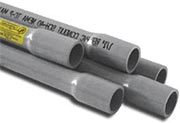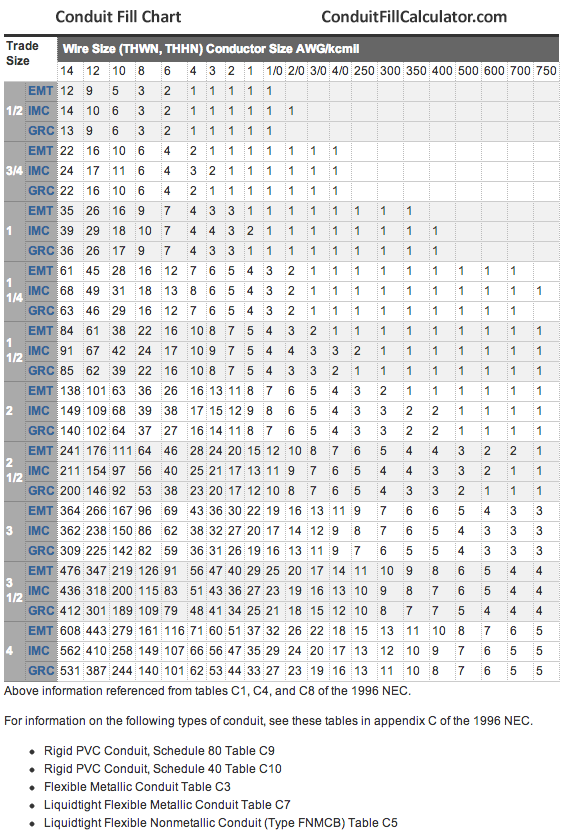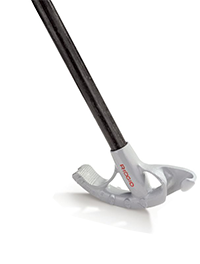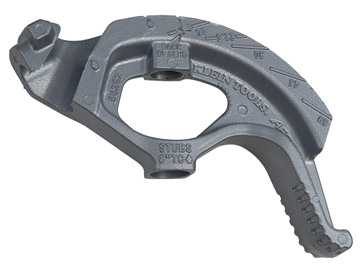Where to get more information on conduit types
As you probably know, there are many different kinds of conduit types, all needed in different scenarios y locations. How do you know which is best and when?
Amazon listings
Amazon is the biggest online seller, and their offerings include electrical and electrician product, including conduit. Through a simple search, you can find many types of conduit types. If you click on any of these, you can find a wealth of information about the selected conduit, including physical characteristics and comments from other electricians and electrician apprentices who have worked with these and have real world recommendations.
Plus, you can get reviews and comments on other products and tools that you’ll need when working with conduits, such as conduit benders and similar products.
Formal learning
If you’re just starting out as an electrician, the best place to learn about conduit types and uses is through an electrician apprenticeship. Apprenticeships are often a required step in formal electrician training (this depends on your jurisdiction). Apprenticeships are a great opportunity to get hands on experience and work along an experienced professional.
Manufacturer websites typically include a lot of information about their product, including fill charts and other tools and software. THHN wire is one of the most common wire types out there, so it’s a good wire to use when practicing conduit fill calculations.
Lastly, there are many formal education institutions that allow you to get practice and theories that will allow you to calculate and use conduits and tools. You must decide if you should enroll in a post secondary program or go directly into an electrician apprenticeship right away.
Conduit definition
 What is a conduit? In the world of electricians, it has the following definition:
What is a conduit? In the world of electricians, it has the following definition:
Conduit (noun): a tube, pipe or duct for protecting electric wires or cables.
Types of conduits
There are many different types of conduits available, which are used depending on the specific electrical installation needs. In this website we describe many different types of conduits in the “Conduit types” category, or from the following list:
Why use conduit to protect electrical wires
You may ask yourself, why go thru the trouble of enclosing electrical wires when most of the time they already have plastic insulation? The reason conduit is used is to provide an extra layer of protection against the elements. Since electrical energy can be dangerous, it is important to protect the wire well.
Some hazards that the conduit protects againsts:
- Rodents or insects that may bite the wire insulation and cause the metal to become exposed.
- Accidental pulling of the wires.
Want more information about conduits?
Check out the rest of this site for great tools and information regarding conduit selecting, sizing, and more!
How to Calculate Conduit Fill
 Calculating conduit fill is a straightforward process, but important to comply with NEC requirements (National Electrical Code) and avoid expensive rewiring (and most importantly, to keep your electrical installation safe!). The following steps describe these factors and explains how to correctly calculate conduit fill.
Calculating conduit fill is a straightforward process, but important to comply with NEC requirements (National Electrical Code) and avoid expensive rewiring (and most importantly, to keep your electrical installation safe!). The following steps describe these factors and explains how to correctly calculate conduit fill.
There are three different factors that must be considered when performing raceway fill calculations:
- Number of cables in the conduit
- Cross section area of the cables
- Number of bends in the conduit
Step 1: Calculating wire cross-section area
If you already know how many wires you need (this means you know the number of wires and what insulation type and gauge these will be) all you need to do is find the cross-sectional area for each wire and add these up.
Example:
You have the following wire types and amounts:
- 4 wires, with insulation type THHN, and gauge of 8 AWG
- 2 wires, with insulation type THW, and gauge of 4 AWG
A 8AWG THHN wire has a cross section of 23.61 square millimeters (0.03659 square inches), while a 4 AWG THW has a cross section of 62.77 square millimeters (0.09729 square inches). This means the total cross section area of all the wires is:
(23.61 sq. mm) x 4 + (62.77 sq. mm) x 2 = 219.98 sq. mm
Finding minimum available conduit area
The National Electrical Code establishes that if a conduit only contains 1 wire, the max fill percentage is 53%. If it contains 2 wires, the max fill percentage is 31%. And if it contains 3 or more wires, the max fill percentage is 40%. Using the wire cross section areas calculated previously we can obtain the minimum conduit size we must use.
Example:
Following the previous example we noted that we’re using a total of 6 wires, which means that in our case, the max fill percentage is 40%. Since we had already calculated the total wire area, we can easily calculate the minimum conduit area:
219.98 sq. mm / 0.4 = 549.95 sq. mm
Using a simple lookup, we can find the closest conduit size.
Example: If we need to use an EMT conduit, we can find that the closest conduit size is a 1 inch conduit, which gives us a 39% conduit fill.
Planning for conduit bends
Bends in conduit make wire pulling hard, and a high conduit fill percentage makes it even harder, which is why even more empty conduit cross-section area is recommended in these cases. For each 90 degree conduit bend it is recommended to subtract 15% from the total cross-section area. Also, you should avoid whenever possible more than 2, 90 degree bends in a single section of conduit.
Conduit Fill Chart
A conduit fill chart can be used when access to online or computer-based tools (such as the Electrician Calculator Pro, which offers conduit size calculator, fill percentages, and more for your smart phone) are not available. These have the disadvantage that compared to conduit fill apps do not offer the flexibility of calculating different wire gauges and other perks, and can be slow and error-prone.
Typical Conduit Fill Chart
The following is a typical conduit fill chart, which shows data for different types of conduit such as EMT conduit, IMC conduit, and GRC conduit. The possible wire gauges go from 14 AWG to 750 MCM, and from conduit trade sizes of 1/2 inches to 4 inches.

How to use a conduit fill chart
The fill chart above allows you to determine how many wires can go inside a given conduit and not exceed a 40% fill rate.
If you have a fixed conduit type and size:
- Find the conduit type and size on the first column (for example, lets say we have a 1 inch EMT conduit).
- Find the wire gauge you require using the top row (for example, lets say we must use 10 AWG THHN wire).
- The intersection of the row and column indicates the maximum amount of wires that can be used (in this example, it would be 16 wires).
You can confirm this value using the online conduit fill calculator on our home page. It will indicate that the fill rate is 39.17%.
Conduit bender
What is a conduit bender
 A conduit bender is a tool used by electricians to bend conduit into different angles in order to neatly organize and route conduits in an area. Since most electricians spend a great deal of time installing conduit, it is of great importance that every electrician know how to use a conduit bender.
A conduit bender is a tool used by electricians to bend conduit into different angles in order to neatly organize and route conduits in an area. Since most electricians spend a great deal of time installing conduit, it is of great importance that every electrician know how to use a conduit bender.
Types of conduit benders
The simplest conduit benders are the manual kind, in which the bending and measuring must be done by the operators own force. This is usually enough for small conduits. However for larger diameters electric powered conduit benders are recommended.
Conduit bender prices
Manual conduit benders can cost anywhere from $30 up to $100 and depend on the build quality and sturdiness, and well as the conduit size you wish to bend. Electrical benders can cost in excess of $2000, however these provide the ability to bend very large diameter conduits with ease.
Conduit bender markings
Conduit benders typically have several markings in order to assist in the bending process and calculations. These markings or alignment symbols are shown in the following image.

Common conduit bends
Electricians have named different forms of conduit bends. Some of the most popular bend names are the 90 degree stub-up, the Back to Back, the Offset, and the Three Point Saddle bend.
EMT Conduit
What is EMT Conduit?
 EMT conduit stands for electrical metallic tubing. As it’s name implies, it is a type of conduit that is made out of metal, typically coated steel or aluminum. EMT conduit is different from other types of metallic conduit such as GRC conduit (galvanized rigid conduit) or RMC conduit (rigid metal conduit) in it’s wall thinkness.
EMT conduit stands for electrical metallic tubing. As it’s name implies, it is a type of conduit that is made out of metal, typically coated steel or aluminum. EMT conduit is different from other types of metallic conduit such as GRC conduit (galvanized rigid conduit) or RMC conduit (rigid metal conduit) in it’s wall thinkness.
Because EMT conduit has thinner walls it is cheaper and lighter, making it preferred over GRC conduit, especially in large commercial or industrial electrical installations where even a small difference in price can mean a big overall saving.
EMT flexibility
Because of it’s thinner walls, EMT is more flexible than other rigid metallic conduits such as GRC and RMC. In spite of this, if your application requires bending other types of conduit are recommended over EMT, such as FMC conduit (flexible metallic conduit). EMT’s thin walls also make it easy to accidentally deform during moving or installation, so additional care must be taken. EMT must be bent where needed using a metallic conduit bender, and can be easily manipulated to take different angles as needed.
EMT conduit fittings
It is normally not possible to add threads to EMT conduit, however if needed threaded fittings can be clamped to the conduit. Instead of screwing into EMT conduits, these are typically joined using clamp type fittings that press down on the conduit.
EMT conduit uses
Typical EMT conduit uses include industrial and commercial installations in which the conduit is exposed and requires bending. In these cases the conduit will look cleaner, and in some cases you will not require a ground wire for 20 amp circuits. To cut it to your required size you can use a hacksaw or simply an abrasive chop saw, and if needed use a tool such as a reamer to remove any burrs that remain from the cuts.


